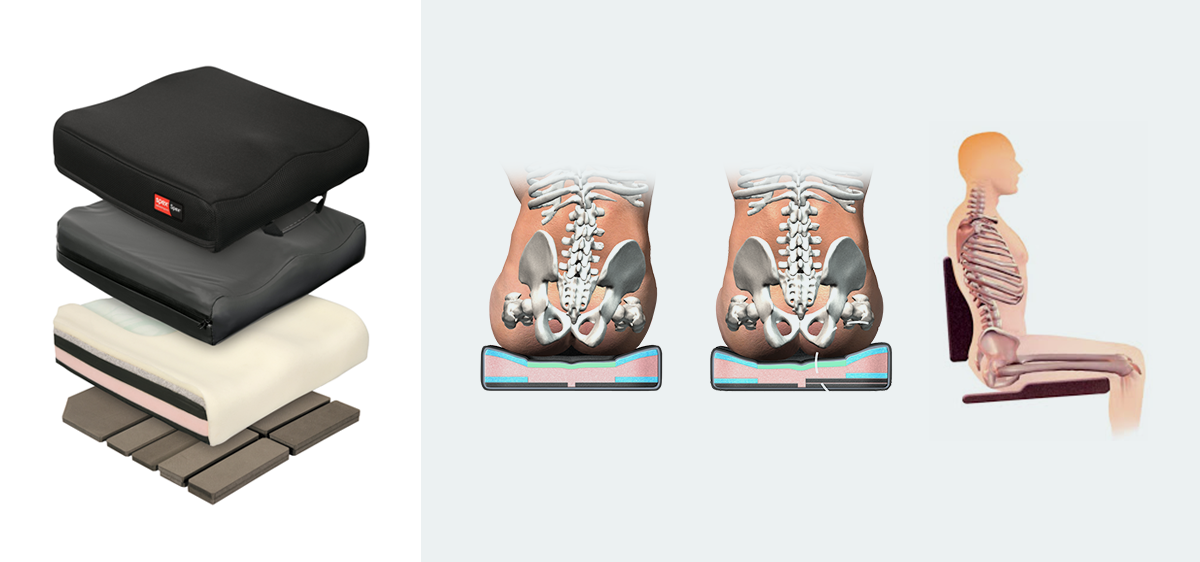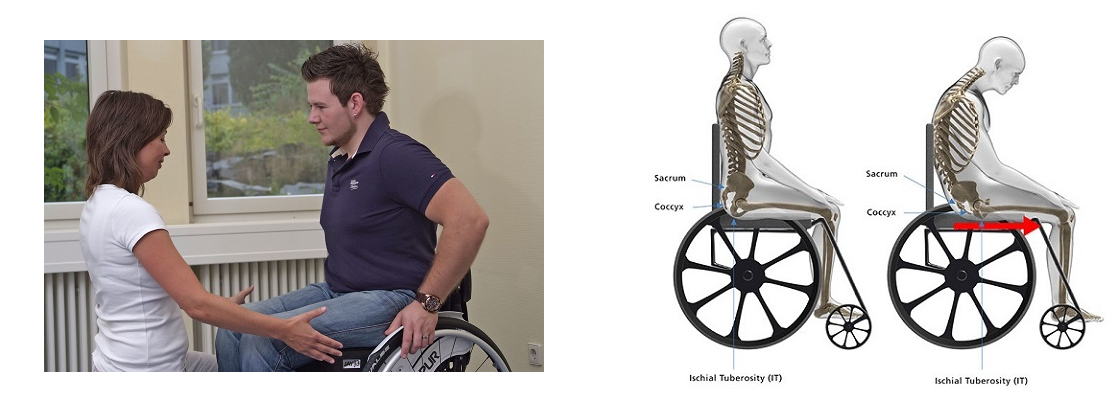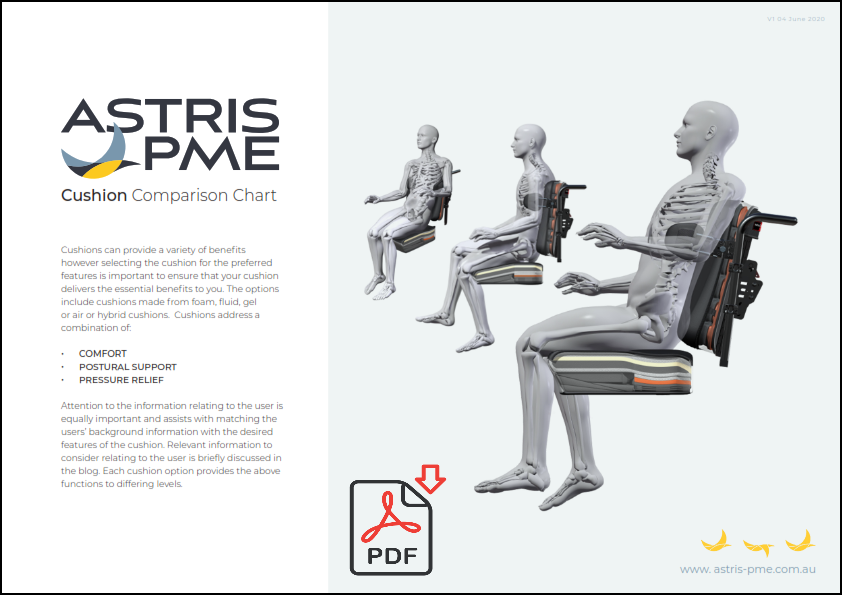Therapeutic cushions are not just about comfort

With the vast array of cushions available today, deciding on a suitable cushion for use on the wheelchair can be confusing and time consuming.
Therapeutic cushions are not just about comfort!
written by
Venesha Moodley, Clinical Educator
(B. OT, Postgrad Cert in Clinical Rehab)
Gaining clarification on the background information relating to the user and the functions the user would like the cushion to perform is also relevant and is briefly discussed. Once an awareness of the user is availed, we can explore the features of cushions to determine which options would most suitably match the user. Let’s review some primary cushion features.

PRESSURE RELIEF
What features of the cushion contribute to pressure relief?
This will include the materials used within the cushion (gel, air, foam) and contouring within the cushion. Cushions offer varying levels of pressure relief and anyone at risk of pressure should have access to a cushion with pressure relieving properties.
How do cushions assist with relieving pressure?
The shaping or contours of the cushion influences the contact of the user’s body and the surface area of the cushion. The closer the contact of the cushion with the user’s body, the more the pressure is distributed, and the user can withstand more pressure while seated. Cushions offer varying levels of contouring.
Cushions with air cells, requires the user to ensure that the cushion is adequately filled with air to provide pressure relief. Loss of air or under inflated cushions result in the user hitting the bottom of the cushion and is at risk of developing pressure areas. Over inflated cushions cause the user to feel unstable while seated on the cushion. Air cushions therefore require close monitoring of the air in the cushion and for tears and punctures.

Fluid filled cushions require the user to ensure that the fluid is evenly spread out to avoid experiencing discomfort and pressure related difficulties. It provides a stable base when coupled with a firm foam base. There is a tendency for the fluid to feel cold and hard in cold temperatures. The option of a hybrid cushion permits the user to use a cushion with a combination of foam and fluid or air. Should the fluid or air be less than required, the addition of foam reduces the risk of pressure related difficulties.

Foam is lighter than fluid or air cushions and include layers of foam which offer pressure relief. The foam cushion is easier to contour to increase contact between the user’s body and the cushion for pressure distribution. Some foam cushions can have additional components (seat inserts or modular components) to permit adjustment so that differences between the left and right side of the body can be managed for improved stability of the seated posture. Foam cushions are generally easier to maintain – does not require inflating or moving the fluid around to ensure pressure relief. Many foam cushions have an incontinence cover to prevent contact of fluids with the foam.

Can be rated as follows: **** High *** Moderate ** Mild *Nil to minimal
STABILITY
Can positioning improve stability while seated?
Cushions are contoured to varying levels. The more aggressive or the higher the contours, the more positioning support is offered by the cushion. Contouring helps in positioning the pelvis and the legs. When the contouring supports our pelvis and legs, we can achieve a position closer to midline or the optimal seated position. Prolonged hours sitting in positions where we deviate from the midline, puts the user at risk of developing curvatures of the spine.
Cushions with aggressive or high contours can be useful to help us to see clearly where we need to sit while on the cushion. Contouring also assists with pressure relief.
Can be rated as: ****High *** Moderate **Minimal *Nil
Seat inserts or modular cushion components are available with some cushions and can assist with improving a stable sitting posture - reduce differences between the right and left side of the body, positions the user closer to midline and helps a user to feel more balanced.
Some other features of the cushion which will affect management of day to day activities:
- The height of the cushion to enable movement on and off the cushion with ease.
- The weight of the cushion to ensure the cushion can be lifted and carried to and from a car independently. And the cushion does not affect the overall weight of a wheelchair during propulsion.
- The level of maintenance required by the user or carer to ensure that the cushion works well for the user.
- The cushion cover offers protection and has an incontinence cover to extend the life of the cushion.
In terms of users, it is beneficial to consider the following:
- How long will the user remain sitting on a cushion? The longer the duration, the higher the level of pressure relief required, particularly if the user is unable to independently weight shift for pressure relief.
- What is the condition of the user’s skin and is there a history of pressure related difficulties?
- Is the user of low body weight (bony bottom)?
- Is sensation to the lower body absent or reduced?
- What sort of transfer technique is used? Sliding transfers may increase the risk of shear pressure. If so, the user may need to consider an alternate transfer technique.
- What is the level of physical ability? The less physical ability, the more support required – consider a cushion with increased contouring for improved positioning.
- What size cushion is required?
Once you’ve gained an understanding of the user and cushion features, you can jointly discuss the most suitable cushion options with one of our product consultants. You can contact us on 1300 131 884 or send an email to
Please refer to the comparison table with further details relating to individual cushions.

Images: Sunrise Medical, Spex Seating, and Agency for Clinical Innovation (NSW).

